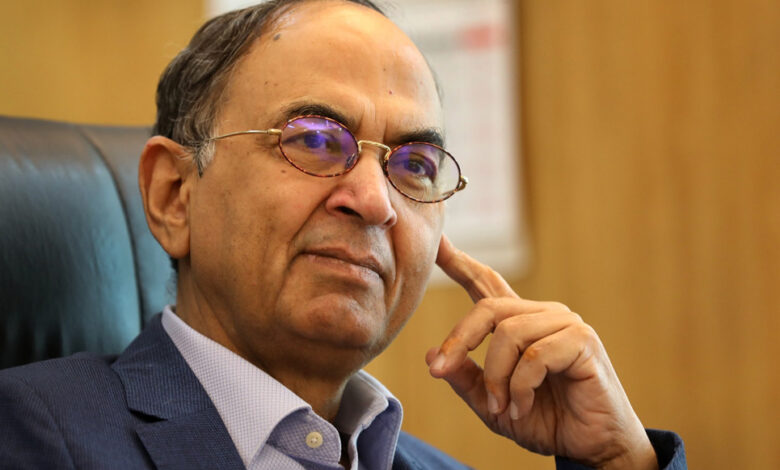Dr. PS Gahlaut talks about Smart Farming: Harnessing IoT for Enhanced Efficiency and Productivity in Agriculture

In recent years, the world has witnessed a remarkable transformation in various industries, and agriculture is no exception. The advent of technology, particularly the Internet of Things (IoT), has revolutionized farming practices, giving rise to what we now call “Smart Farming.” This integration of IoT in agriculture is reshaping the way we produce food, improving efficiency, sustainability and overall productivity. Today, we ask the stalwart of the Indian agriculture industry –PSGahlaut, what is “Smart Farming” and what it means to the changing Indian agriculture landscape.
Understanding the Role of IoT in Agriculture
The Internet of Things (IoT) refers to a network of interconnected devices and sensors that collect and exchange data over the internet. In the context of agriculture, IoT plays a pivotal role in gathering real-time data from fields, crops, livestock and machinery. This data-driven approach enables farmers to make informed decisions and optimize their farming practices.
Dr. PS Gahlaut believes that Smart Farming will have a long-term impact on Indian agriculture as it will remove disabilities in farm operations and empower farmers. “I see Smart Farming as Bhramastra for our farmers. The best thing with Smart Farming is that it will empower farmers by enabling them to make data-driven decisions. Farmers will become more efficient as they will let go of redundant and traditional farm practices as they replace them with Smart Farming techniques.”
Top 5 benefits of Smart Farming
- Data-Driven Decision Making: IoT-powered smart farming provides farmers with valuable data on soil conditions, weather patterns, crop health and livestock behavior. Armed with this information, farmers can make data-driven decisions, leading to better resource management and increased yields.
- Resource Optimization: Smart farming minimizes wastage of water, fertilizers and other valuable resources. By applying inputs precisely where and when they are needed, farmers can reduce costs and promote sustainable farming practices.
- Enhanced Efficiency: Automation of tasks through IoT devices reduces manual labor and human errors. This efficiency boost allows farmers to focus on strategic planning and innovation.
- Early Detection of Issues: IoT sensors can detect early signs of diseases, pests, or crop deficiencies. Timely identification enables farmers to take immediate action, preventing the spread of problems and reducing crop losses.
- Remote Monitoring: IoT technology enables farmers to monitor their fields and livestock remotely. This capability is particularly valuable for large-scale farming operations and can save time and resources.
Exploring IoT Technologies for Smart Farming
- IoT Sensors: These devices are deployed across fields to collect data on soil moisture, temperature, humidity and nutrient levels. They provide valuable insights for precision agriculture.
- Automated Irrigation Systems: IoT-driven irrigation systems can adjust water supply based on real-time weather data and crop needs, ensuring optimal water usage.
- Livestock Monitoring: IoT wearables and sensors can track the health, location and behavior of livestock, assisting in early disease detection and improving animal welfare.
- Connected Weather Stations: IoT-enabled weather stations offer localized weather data to farmers, helping them plan farming activities more efficiently.
Present IoT Sensors and Devices for Smart Farming
- Crop Health Monitoring: Drones equipped with multispectral cameras can capture images of crops and analyze their health, providing insights into potential issues.
- Livestock Tracking: GPS-enabled collars or ear tags allow farmers to track the location and movement of livestock, ensuring their safety and efficient grazing practices.
- Automated Milking Systems: IoT-powered milking systems can recognize individual cows, monitor milk quality and automate the milking process.
Automating Farm Operations with IoT: Robotics and Drones
Robotics and drones are increasingly being integrated into farming operations, bringing further automation and efficiency to the agricultural sector. These devices can perform tasks such as planting, harvesting, spraying pesticides and monitoring crop health.
Real-Life Examples of Successful IoT Implementation in Agriculture
“I came across many success stories of people implementing Smart Farming techniques across India. Be it Nagpur, Beed, or Jaisalmer, farmers who embraced technology happily are reaping unimaginable benefits from a small piece of land. This is what we have to do. Take these Smart Farming techniques to all the small farmers and help them make data-driven decisions. The day this happens, India will automatically become No. 1 globally in Agriculture and related industries,” says Parvinder Singh Gahlaut.
The Future of Smart Farming
The future of smart farming holds immense potential. As technology continues to advance, we can expect even greater integration of AI, robotics, and big data analytics. Artificial intelligence will play a pivotal role in making predictive analyses and suggesting optimized farming strategies. The result will be an agriculture sector that is not only highly productive but also environmentally sustainable.
In conclusion, smart farming, powered by IoT technologies, is reshaping the landscape of agriculture. “With its data-driven approach, resource optimization and automation, smart farming is paving the way for a more efficient, productive and sustainable future for agriculture”, shares PS Gahlaut. As the world’s population grows, the importance of smart farming in ensuring global food security cannot be overstated. Embracing IoT in agriculture is not just a trend but a necessity in the quest for a smarter, greener and more bountiful planet.







